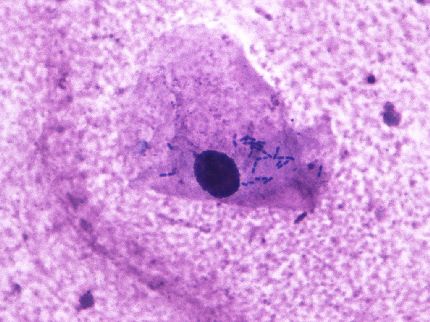
As a practicing physician of internal medicine, I admit, some patients with pneumonia in intensive care a week. Many of these elderly patients. Some polynomial P are more than 90 years. Pneumonia in the elderly is very common, and these patients make up about 25% of their practice. Symptoms of pneumonia in the elderly depend on their general health and functional status. Symptoms of pneumonia in the active and outgoing patients differ from those in patients with reduced mobility. I will describe some real stories from pneumonia in elderly patients, to teach you how they represent in real life. I will change names, occupation and other details to protect the identity of these patients. Pneumonia is a lung disease. When our lungs become infected, they develop inflammation and injury and cause symptoms of pneumonia. To understand how the pneumonia symptoms, you should look at it from two different levels: at the level of and the level of the body. In medical terms, they are called local systems and systemic systems. Local symptoms or signs of developing organ level changes that occur in the lungs resulting from pneumonia. Infected lungs can cause several problems. They can cause irritation of nerves, resulting in coughing. They can cause problems with oxygen exchange and may cause difficulty in breathing. They can cause inflammation of friction and causes pain when breathing. In young patients, they simply express as cough, shortness of breath and pain when breathing. In elderly patients, it will be slightly different. Lungs and nervous tissue in the lungs is very reactive and responsive to older people. They are not always able to cough heavily when they pneumonia. They can not always express a sense of breathlessness. They may not always feel pain when breathing. In elderly patients, you will notice that they are trying to cough, but she can not go out as a cough. He can just go like grunt noises when breathing. They can not tell if they feel short of breath, but they can have some unpleasant feeling in the chest. They can not feel pain when breathing, but can grow fast or shallow breathing pattern. Specific symptoms in each patient is different, but if you can imagine, with weak lungs less sensitive nerves and try to see if the symptoms especially elderly patients will fit into this picture, you can assign this a sign of possible pneumonia. At the level of the body or system level, pneumonia behaves as a typical infection. When your body detects an infection, it activates the immune system to try to fight this infection. This body makes certain chemicals, special proteins and specialized cells that cause inflammation throughout the body. The body temperature rises and the heart beats faster. In elderly patients, these responses are usually blunted. The immune system in elderly people, usually strattera cost not strong enough to make it hard to react. But you will find that their bodies are struggling to make these changes. Individual patient's immune system will decide how many answers will be created. Some patients may be able to make a slight fever, while others do not even fever. Some patients may end up lower than normal body temperature rather than temperature. Others may just chills and shaking from an unsuccessful attempt to produce fever. Some may simply feel drowsy, sleepy and sluggish, while others may be confused or irritable. In general, you can detect signs of struggle and tension in the body. This struggle and stress is something that will be distributed to all elderly patients with pneumonia, but they express the will completely depend on the individual patient. Ms. B in '85 a woman who lives in a nursing home for the past 2 years. She has three sons and nine grandchildren who visit her often. She is always happy when grandchildren visit her, she always look forward to their twists and Giggles. She has some memory problems and sometimes loses track, what day, but she always remembers the names of all her grandchildren. It also does not forget about the good old days when she was at home with her husband. He died of stomach cancer three years ago. On Friday afternoon, one of the sisters went to his room to give her medicine. She noted that Ms. B is not quite himself that day. The nurse knew her very well. She was always very friendly and fun manner. But that day, she seemed very sleepy and tired. The nurse asked her if something happened to her, but she can not rely specify any specific symptoms. She just said she feels very tired that day and wanted to sleep early. Nurse to check her temperature and took her blood pressure and pulse. She had no fever. It seemed all within normal limits, but something not quite right there. The next morning, the nurse went into his room to wake her, but she was very weak and could not get out of bed. She seemed a little confused and asked a nurse where her husband. She seemed to forget about his death. At this time the nurse is really concerned and made some phone calls. Later they decided to take her to a local hospital. In the ER, she was still unable to say what worried her. It just seemed confused and lethargic. They conducted a series of tests on her. They did some blood tests, CT brain and chest X-ray. When the ER doctor looked at the X-ray chest, he found that the patient pneumonia. Then he called me to admit the patient and begin treatment as I was on-call doctor that day. The patient had normal textbook signs and symptoms of pneumonia, but I was not surprised. In fact, the most common method of pneumonia in elderly patients who are in nursing homes now. I talked with the family and told diagnose pneumonia in the elderly. They were surprised that she was not actually symptoms of pneumonia, but were happy that we got the diagnosis right. I confessed to her in the intensive care unit and gave her antibiotics and oxygen. I gave her fluids through her veins as she appeared more dehydrated. Dehydration is usually in patients with pneumonia in the elderly. The next morning, she was more alert and was able to have more normal conversation. Four days of treatment to restore her, as she felt before she became ill, but all were happy in the end. Pneumonia in the elderly is a very common disease, but there are so many different things you can learn about the disease to really take care of patients with pneumonia in the elderly. I hope that this patient-oriented approach to teaching its readers of pneumonia in the elderly has been helpful. Please visit later, as I will download more stories about different aspects of pneumonia in the elderly and how different patients have different symptoms. .


